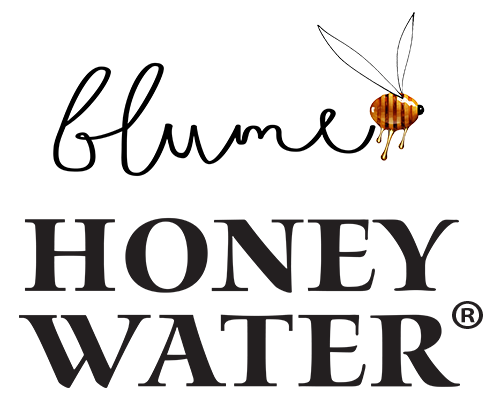Favorite Ways To Save The Honey Bee
Since it is National Honey Bee Day on Saturday, August 15 this year, we gathered all the bee-friendly information we could find from some of our favorite organizations and people to give you a fun list of ways, large and small, to help the world’s smallest but mightiest member: the honey bee.
Find out what these places do for bees:
GREENPEACE
In response to the world’s bees in crisis, Greenpeace started a Save the Bees campaign to activate people to be the solution to help protect bees in crisis. Here are highlights from their work:
What’s Killing the Bees — and Why It Matters
Worldwide bee colony collapse is not as big a mystery as the chemical industry claims. The systemic nature of the problem makes it complex, but not impenetrable. Scientists know that bees are dying from a variety of factors—pesticides, drought, habitat destruction, nutrition deficit, air pollution, global warming and more. Many of these causes are interrelated. The bottom line is that we know humans are largely responsible for the two most prominent causes: pesticides and habitat loss.
Pesticides and Bees
Biologists have found more than 150 different chemical residues in bee pollen, a deadly “pesticide cocktail” according to University of California apiculturist Eric Mussen. The chemical companies Bayer, Syngenta, BASF, Dow, DuPont and Monsanto shrug their shoulders at the systemic complexity, as if the mystery were too complicated. They advocate no change in pesticide policy. After all, selling poisons to the world’s farmers is profitable.
Solutions That Save the Bees
Common sense actions can restore and protect the world’s bees. Here’s a strong start:
Ban the seven most dangerous pesticides.
Protect pollinator health by preserving wild habitat.
Restore ecological agriculture.
HEIFER INTERNATIONAL
Heifer incorporates bees into many of their projects. Farmers who keep bees see increased crop yields, whether they are growing coffee, spices or vegetables. Those same farmers are able to harvest honey during the non-growing season to earn extra income, harvesting 60 pounds or more of honey each year. Here are the suggestions Heifer gives to take action to save bees:
Let Your Lawn Get Back To Its Roots
Think about letting a portion of your yard go back to its roots. Allow dandelions and clover to grow again (two of bees' favorite delicacies). Not only will you spend less time mowing your lawn, the bees will thank you for it.
Just say No to Pesticides and Herbicides
Pesticides and herbicides contain chemicals that are very harmful to bees and other beneficial insects. Avoid chemical sprays on your plants and yard. Do some research and try some natural, bee-friendly alternatives.
Keep a Bee Garden
Plant an array of herbs and flowers that attract bees (like mint, lavender, and poppies, to name a few). Ideally, pick flowers that are native to your area and will bloom at different times of the year. Put a shallow container of water in your garden so that the bees have a place to re-hydrate and add some twigs and pebbles to give them a place to land.
Shop Responsibly
Supporting your local growers and supporting bees go hand in hand. When you can, buy your fruits and vegetables (and honey) from local farmers through a CSA (community supported agriculture) box or from local farmers markets.
Bee Informed
There are a lot of misconceptions going around about bees and how important they are to the world we live in - it's time to educate yourself! The Honeybee Conservancy is a great place to start!
USDA
The United States Department of Agriculture declared National Pollinator Week in the U.S. after learning the vital importance of bees to our lives. “In the United States, more than one-third of all crop production – 90 crops ranging from nuts to berries to flowering vegetables - requires insect pollination. Managed honey bee colonies are our primary pollinators, adding at least $15 billion a year by increasing yields and helping to ensure superior-quality harvests.” Here’s what the USDA is doing for bees:
Hives and Flowers
White House officials encouraged Americans to consider setting up hives where possible, or at least to plant bee-friendly flowers and flowering herbs in their gardens and yards.
Research and Management
The Agricultural Research Service is conducting research to improve the nutritional health of bees, to control the Varroa mite and other pests and pathogens, and to understand the effects of pesticides on colonies. They are setting up long-term studies to determine causes and evaluate treatments for Colony Collapse Disorder and other kinds of bee mortality, and establishing a bee gene bank to help breed traits such as resistance to pests or diseases and pollination efficiency.
Nationwide Bee Surveys
Our National Agricultural Statistics Service, working with the Animal and Plant Health Inspection Service have begun taking a nationwide survey of bee health that sets baseline values for pest and disease prevalence. The U.S. Forest Service and the Farm Service Agency has been creating and restoring hundreds of thousands of acres of pollinator habitat, while the Natural Resources Conservation Service has provided financial assistance to landowners to protect or restore 30,000 acres of private lands.
Large organizations, individuals...everyone makes a difference for bees. Choose to be on the right side of history and make even one small choice that positively impacts and protects a honey bee this week!

